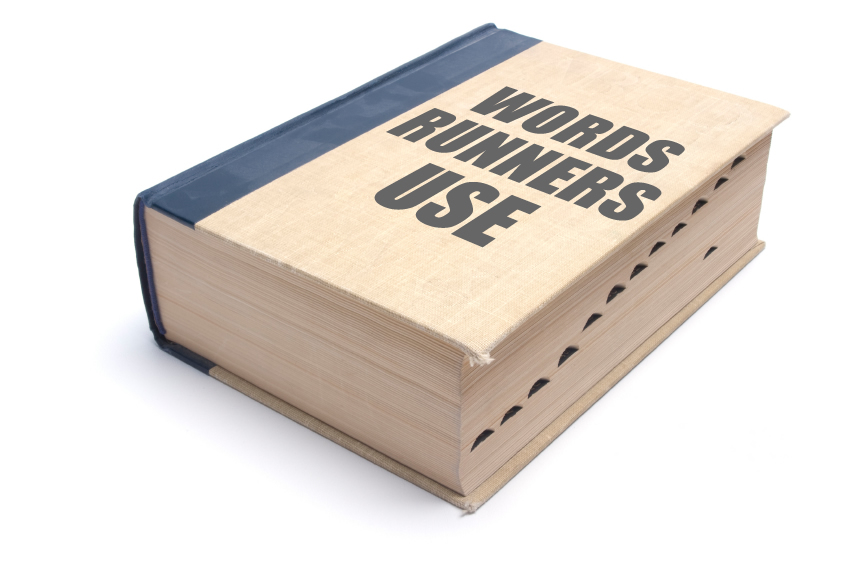What’s the difference between an ACL, MP, and VO2max?
Like many niche professions or pursuits, runner’s have a ‘language’ of their own that are often incomprehensible to outsiders or novice runners. Here is an introduction to the alphabet soup of acronyms and abbreviations that runners use.
ACL: Anterior Cruciate Ligament. One of the four major ligaments of the knee. An ACL tear is caused by over-stretching the knee’s ligament; it often occurs when an athlete rapidly stops or changes direction, causing the knee to buckle or lock.
AIMS: Association of International Marathons and Road Races. A member-based organization of more than 350 of the world’s leading distance races representing over 100 countries.
AT: Anaerobic Threshold. The phase between aerobic and anaerobic running. Also known as LT: lactate threshold.
BQ: Boston Qualify. When runners say they “BQ’d”, it means that they ran a Boston marathon qualifying time.
BPM: Beats Per Minute. The number of time a heart beats in minute.
C25K: Couch to 5K. A common beginner’s running program.
COC: Canadian Olympic Committee. The organization representing Canadian athletes in the International Olympic Committee (IOC) and the Pan American Games.
CR: Course Record. The fastest recorded time on a specific running course.
DNF: Did Not Finish. Listed in race results when a racer started the race but did not finish it. Related terms include DNS: Did Not Start, is listed in race results when a racer signed up for a race but didn’t start it; and DNQ: Did not qualify. Another related term is DFL: Dead F@#king Last, an unofficial term that many runner’s wear with pride 😉
DOMS: Delayed Onset Muscle Soreness. Muscle soreness that occurs a day or two after an intense workout or long run.
FKT: Fastest Know Time. The fastest known times for a given trail or route.
GPS: Global Positioning System. A satellite navigation system that provides location and time information. A common feature in most running watches to record distance, pace a time during runs.
HR: Heart Rate. The number of contractions of the heart that occur in a single minute. HR is also used in these acronyms: MHR (HRmax): Maximum Heart Rate, useful to get 60% and 85% values for training effect; and HRR (HRres): Heart Rate Reserve, which is the difference between MHR and RHR: Resting Herat Rate (MHR–RHR = HRR). Some runners base training on percent of HRR instead of MHR.
HRR (HRres): Heart Rate Reserve. The difference between maximum heart rate and resting heart rate. Some methods of measurement of exercise intensity measure percentage of heart rate reserve.
HRM: Heart Rate Monitor. A personal monitoring device that measures heart rate.
IAAF: International Amateur Athletic Federation. The world-wide organization that governs running.
IOC: International Olympic Committee. The governing body of the modern Olympic movement.
ITBS: Illotibial Band Syndrome. A common overuse running knee injury.
KM: Kilometre. A metric measure of distance. It is sometimes abbreviated as simply K.
LSD: Long Slow Distance. LSD runs are a staple of training for a long distance race, especially half marathons or marathons.
MHR: Maximum Herat Rate. Another abbreviation for HRmax, the highest heart rate an individual can achieve without severe problems through exercise stress.
MP: Marathon Pace. A runner’s goal race pace for the marathon.
MPW: Miles/Mileage Per Week. The amount of miles you run each week. usually seen in training schedules. MPD: Miles per Day and MPM: Miles per Month, are also occasionally used.
MTSS: Medial Tibial Stress Syndrome. The official term for ‘shin splints,’ a common injury, especially in new runners.
NR: National Record. The fastest certified time in a given country for a running event.
NRR: Not Running Related. Things not related to running. Often used when describing anon-running injury.
NSAID: Non-steroidal Anti-inflammatory Drug. Includes brand names like Advil, Aleve, and Motrin.
OR: Olympic Record. The fastest certified time in the Olympic Games for a running event.
PB: Personal Record. A runner’s best time at a specific race distance. For example, “My PR in the marathon is 3:47:50.” Some runners use PB (Personal Best) instead. A related term is PW (Personal Worst), a runner’s worst time at a specific distance.
RHR: Resting Heart Rate. The number of contractions of the heart that occur in a single minute while the body is at complete rest. This number will vary depending upon the age, gender, and general health of a person.
RICE: Rest, Ice, Compress, Elevate. The standard treatment for inflammation-type injuries.
RRCA: Road Runners Club of America. The oldest and largest American association of running clubs, running events, and runners dedicated to promoting running as a competitive sport and as healthy exercise.
SRD: Scheduled Rest Day. Recovery days included in your training schedule to prevent overtraining and allow the body to recovery and repair.
TM: Treadmill. Shorthand for a run completed on a treadmill.
USATF: USA Track and Field. The USA national governing body for the sport of track and field, including the marathon.
USOC: United States Olympic Committee. The National Olympic Committee for the United States.
VO2max: Maximal Oxygen Consumption. The maximal amount of oxygen that a person can extract from the atmosphere and then transport and use in the body’s tissues. Higher V02max generally equals better performance. VO2max can be improved with training but has a genetic limit.
WR: World Record. The fastest certified time in the world for a running event.
XC: Cross Country.Running events where teams and individuals run a race on open-air courses over natural terrain.
XT: Cross Train. Non-running activities that help improve overall fitness and performance.
Your Turn
Did you learn anything new from this list? Did I miss any abbreviations you’ve heard?










